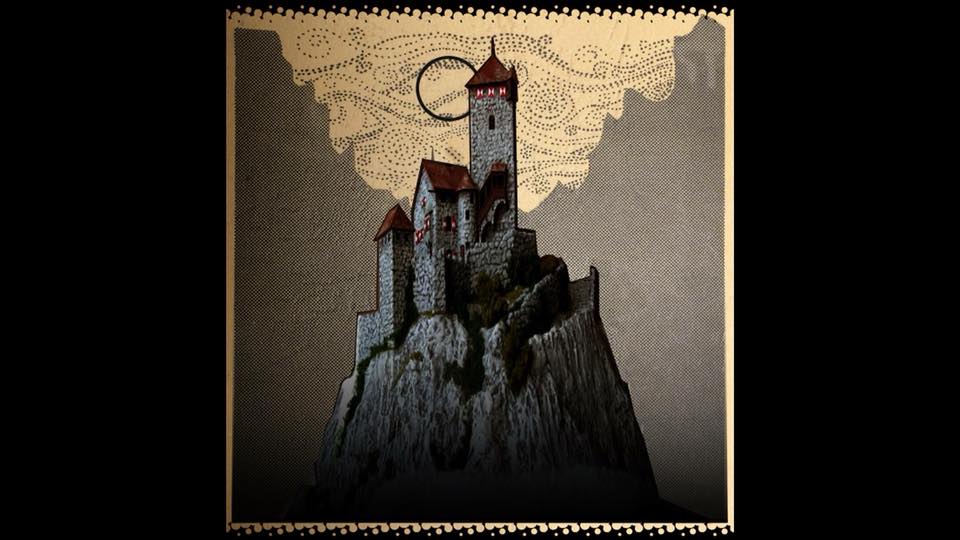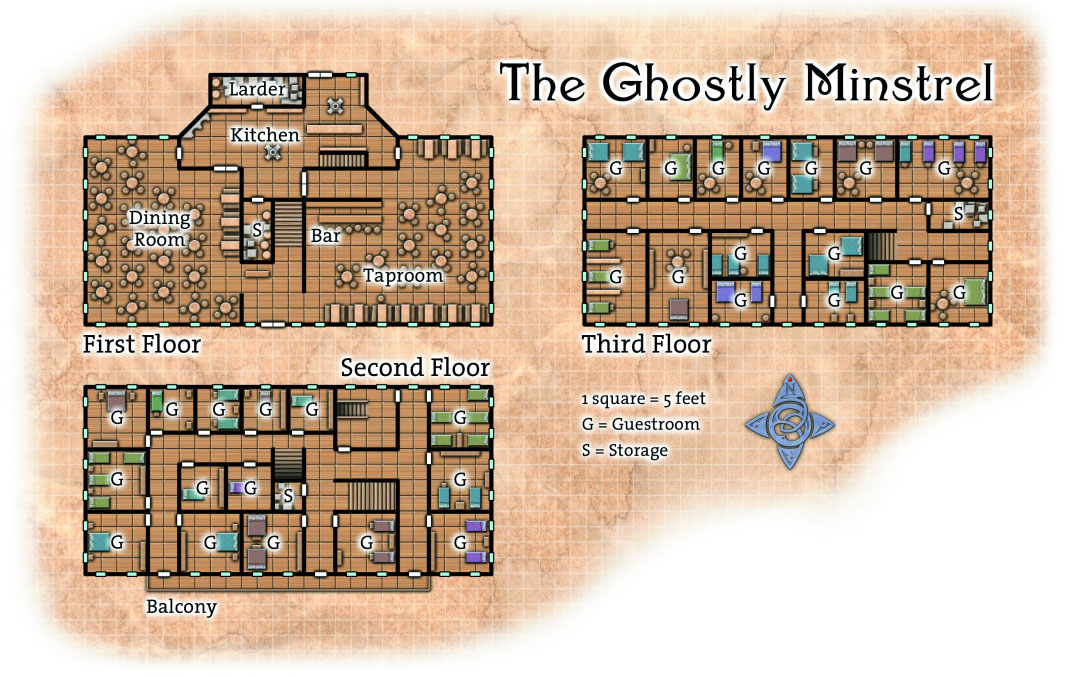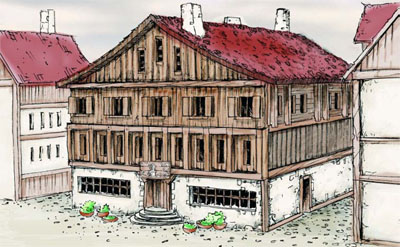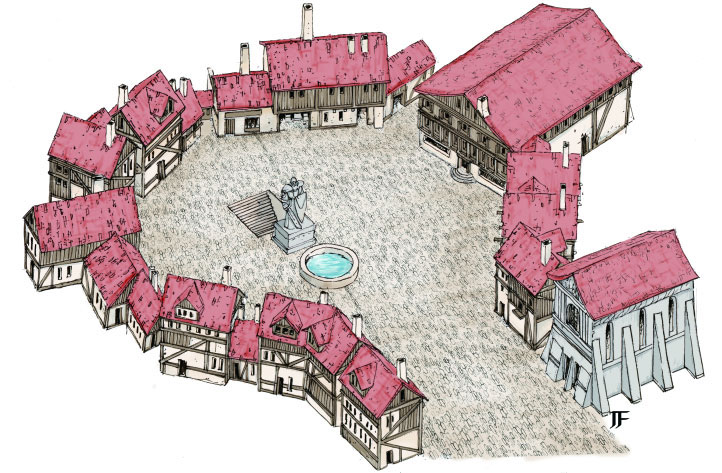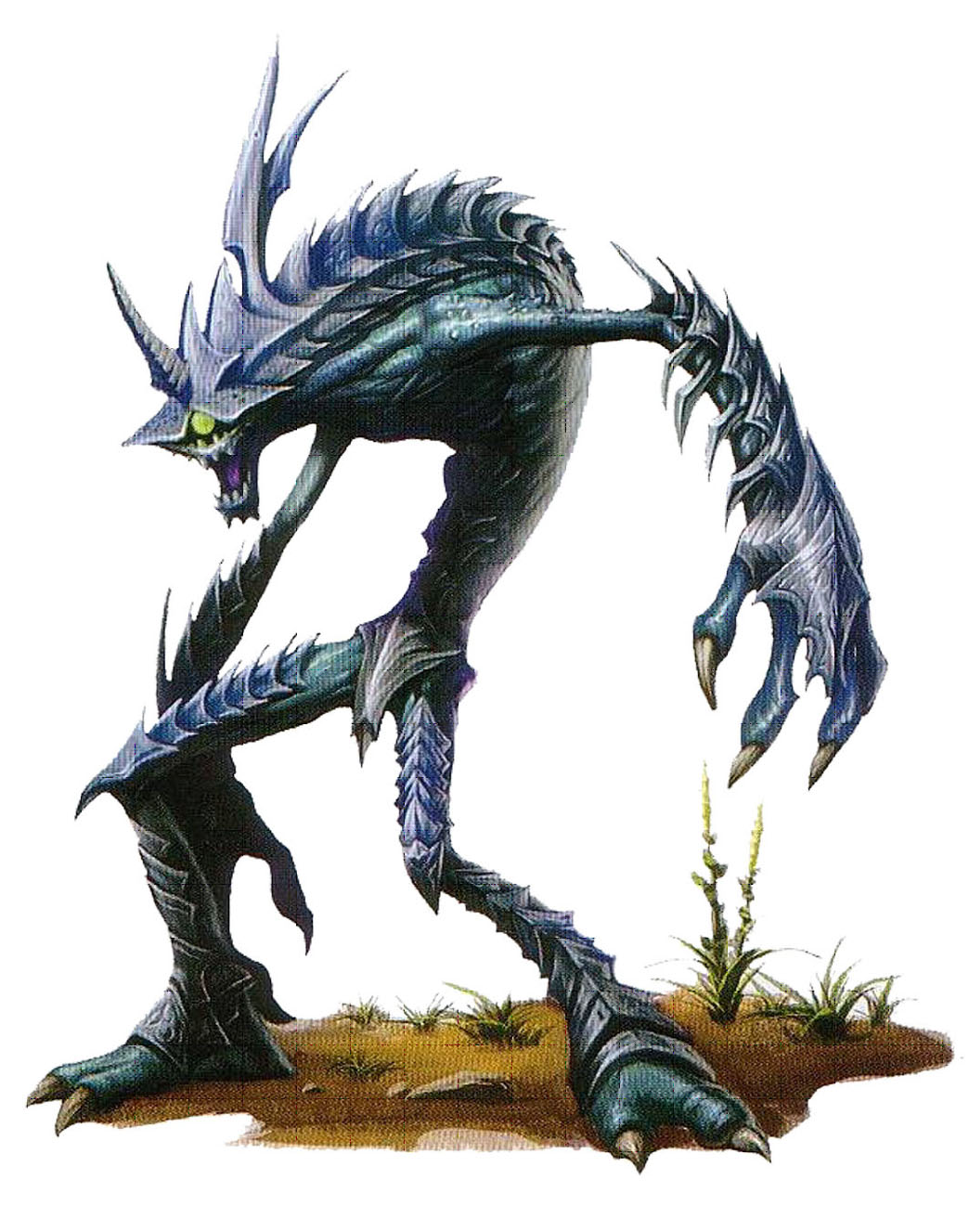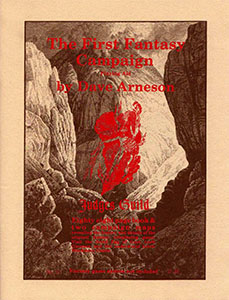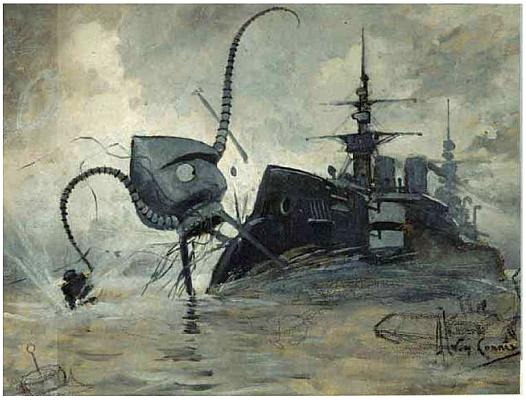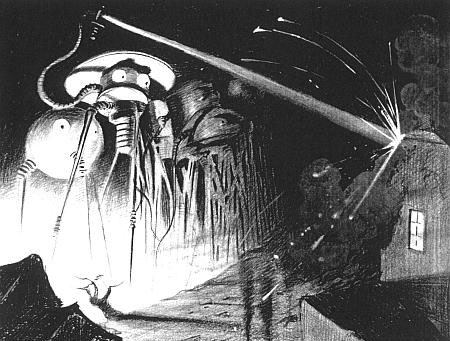
| D10 | SPECIAL | POINT COST |
|---|---|---|
| 1 | Basilisk | 100 |
| 2 | Giant Animal | 150 |
| 3 | Robot | 100 |
| 4 | Vampire | 100 |
| 5 | Man-Eating Seaweed | 150 |
| 6 | Black Pudding / Green Slime | 50 / 15 |
| 7 | Succubus / Incubus | 50 |
| 8 | Living Statue | 150 |
| 9 | Ghost (roll on sub-table) | 100 |
| 10 | Normal Monster With A Special Power | +50 |
Basilisk: Has 4-24,000 GP in its lair.
Giant Animal: Each of these giant animals claim a demesne within the dungeon. And are named. (See Supplement II: Blackmoor for additional Giant Animal stats, but increase their HD.)
- Giant Worm: Sinak
- Giant Insect: Siliar
Robot: Roll on the Robots treasure table. If generated here, they are not quiescent.
Man-Eating Seaweed: Infests an entire section of the dungeon. It fights like a multitude of entities (purchase with its point total), but can only be permanently destroyed by finding and burning out its roots.
Living Statue: Each has the likeness of a Greek God. Only Poseidon does not appear; he was defeated and left broken somewhere in the dungeon.
Ghost: Roll on sub-table.
Normal Monster With a Special Power: Roll on appropriate Group table, then roll on the Potion/Amulet treasure table to determine the creature’s innate power.
GHOSTS
| D20 | GHOST |
|---|---|
| 1 | Ghosts of the Black Hall |
| 2 | Ghosts of the Library |
| 3 | The Dog Duke |
| 4 | Marcellius |
| 5 | The Wizard's Howl |
| 6 | The Forgotten Maiden |
| 7 | Headless Baron |
| 8 | Lady of Lust |
| 9 | Lord Calvin |
| 10 | The Jungle Beast |
| 11 | The Child's Room |
| 12 | The Ghost Rats |
| 13-14 | Tortured Soul |
| 15-16 | Soul from the Black Pit |
| 17-18 | Dead Delver |
| 19-20 | The Lords' Council |
Ghosts of the Black Hall: 40 years ago Ben-Hassock barbarians invaded. A diplomatic delegation was conducted to the Reception Hall. The barbarians had a wizard disguised in their ranks, who released a spell through the ten enemy representatives, transforming them into abominations. 10% chance this encounter is actually with the 10th enemy abomination (who was never found; use stats of Type II demon from Supplement III: Eldritch Wizardry). Otherwise it’s with a ghost from those slain in the Black Hall.
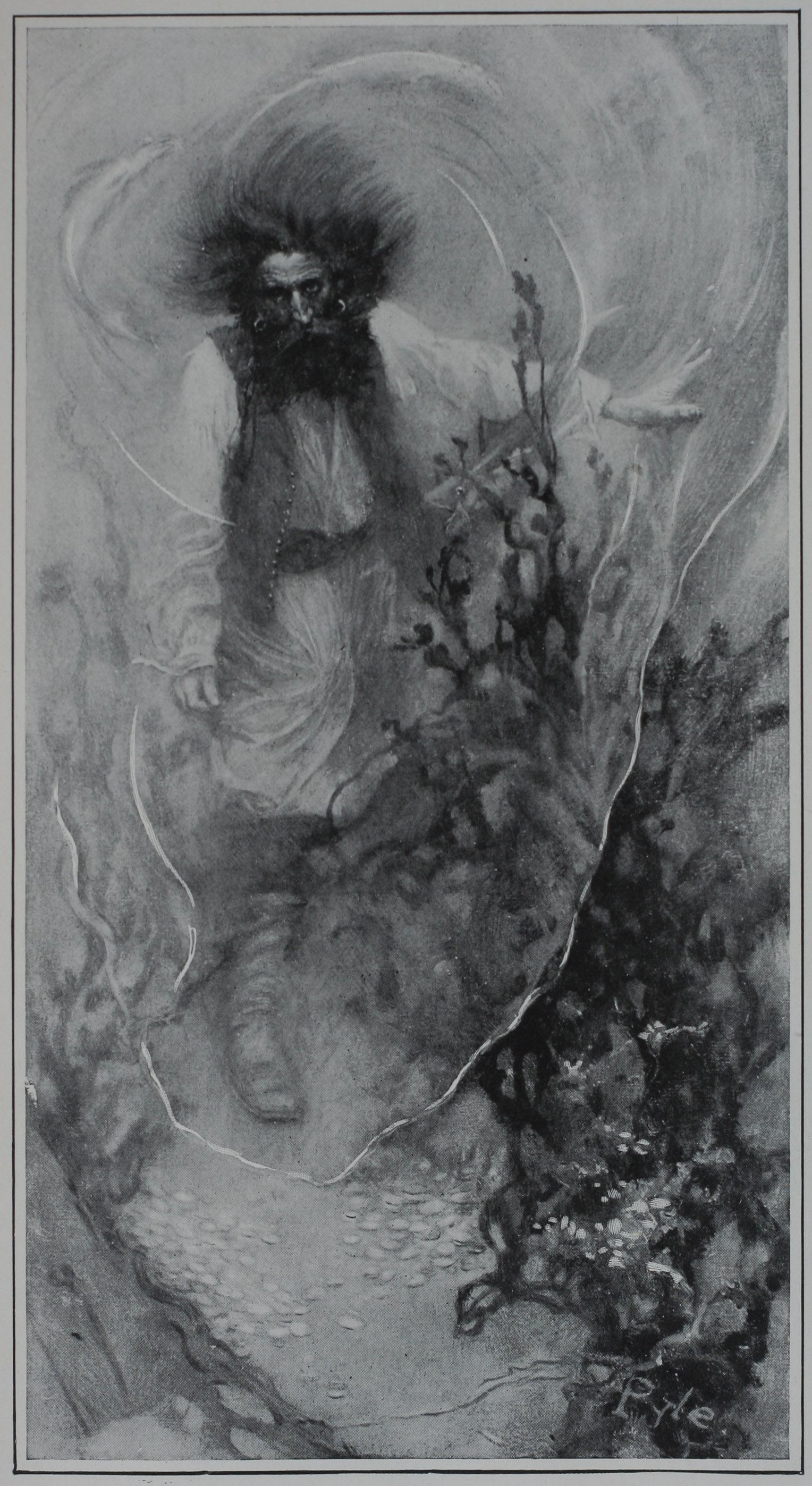 Ghosts of the Library: These are the spirits of the noblemen who were slain by the Weasel when he sought to betray Blackmoor to the Egg of Coot. Only glimpses are seen, for it is said they are still bound to the Library in some strange way. They cry out for release.
Ghosts of the Library: These are the spirits of the noblemen who were slain by the Weasel when he sought to betray Blackmoor to the Egg of Coot. Only glimpses are seen, for it is said they are still bound to the Library in some strange way. They cry out for release.
The Dog Duke: Seeks to augment his horror with blood-letting and death. (His body is interred in the Tombs.)
Marcellius: A hero buried in the Tombs. This ghost will come to the aid of those in the dungeon, quenching its thirst for blood on evil heads.
The Wizard’s Howl: A Wizard who, due to his black arts, was walled up within his laboratory beneath the Castle and left to die. His ghost is, at any time, obsessed upon the casting of a single spell.
The Forgotten Maiden: A Duke who feared the Castle would fall during a siege walled up his wife within the dungeon along with a plethora of his other treasures. He died in the siege and no one knew where he had hidden her. Her screams echoed up into the Castle for weeks before she died (and still do upon occasion). If someone reminds her of her husband (90% if male, 25% if female), she will lead them into deadly danger. Otherwise, she will seek to lead them to her body (and the treasure she lies upon).
Headless Baron: The headless ghost of Baron Alveraz, who was killed in a surprise barbarian attack some years ago and whose supposed appearance foretells doom.
Lady of Lust: Her fate for being an uncooperative wife is to take any man into her grasp, leaving their face horribly transformed into a gray rictus.
Lord Calvin: Fell victim to the Lady of Lust and killed himself in despair at the fate that had befallen him. Since that time, he rather graphically takes out his anguish on whomever is in the room when he appears.
The Jungle Beast: A Baron kept this beast as a pet. The Beast eventually had enough of him and put an end to the Baron. It vanished with the Baron’s remains.
The Child’s Room*: A somewhat dirty child’s room. It will appear randomly in various rooms of the dungeon; if you leave and return, it will be gone. Sometimes it becomes seemingly attracted to particular people, seeming to “follow” them around. Sometimes you leave the room and you’re in a completely different section of the dungeon. The child itself is never seen, but the rocking horse in the corner will gentle creak back and forth.
The Ghost Rats*: A carpet of surging, ectoplasmic rats. They don’t attack, but their passage can drain the life from those who can’t get up off the floor.
Tortured Soul: One of many slain in the Torture Chamber beneath the Castle. Their spiritual forms show the wrack wrought upon their bodies in their death.
Soul from the Black Pit: This scorched and blackened spirit escaped (or was released) from Hades through the portal somewhere deep within the depths of the dungeon.
Dead Delver: So many have died exploring the dungeons beneath the Castle. Here’s another one.
The Lords’ Council: The other apparitions of past rulers are, for the most part, scary but harmless apparitions who do quite a bit of horsing-around (and sometimes wander down into the dungeons). It seems as if any who rule from Blackmoor’s throne and is buried within or beneath its walls is cursed (or blessed?) to wander its halls and catacombs as a restless spirit.
OTHER GHOSTS OF BLACKMOOR
Lord Alfred and His Wife: Lord Alfred was caught by his wife with one of the serving wenches. The resulting foray by his wife and her battle axe made a permanent impression upon her husband and the servant. The gory act is recreated upon occasion within the room where it happened. The room has been sealed up in response. Years later a lord locked his wife and wealth and children in the room during a siege (not realizing what room it was), and they were killed by Lord Alfred’s wife, too. The room was sealed again; the cursed treasure not removed.
DESIGN NOTES
The special monsters listed here are all inspired by the original Blackmoor keys or other accounts of play with Arneson. A few are a bit more of a stretch than others, however: Robots appear only in the treasure tables, not any of Arneson’s keys (but having autonomous robots running around down here feels right). The “Man-Eating Seaweed” appears only as that name and I’ve creatively expanded upon it. Normal Monster With A Special Power is based on “Air Elemental W.A.S.P.” from the original key (for which testimony exists that W.A.S.P. stands for With A Special Power); it follows logically that other special monsters might receive special powers. Living Statues are perhaps the largest reach, being based entirely upon the description of a broken statue of Poseidon found within the original dungeon.
Among the Ghosts, most are drawn directly from Arneson’s notes on the haunted halls of the Castle. (It might be interesting to run a session set within the Haunted Castle during an epoch when it’s been sacked or otherwise abandoned.) The exceptions are the Child’s Room and the Ghost Rats, both of which I created from wholecloth. A few other details have also been added as they struck my fancy (such as the idea of the heroic Marcellius being a helpful ghost to be feared by the Bad Guys.)
The original Vampire — literally the first vampire in all of D&D! — was the player character Sir Fang. (Who, in turn, prompted the creation of the Cleric class to oppose him.) In the epoch at which I’ve chosen to diverge from established, the Baron Fant is not yet wandering these halls as Sir Fang. But vampires are cool.

